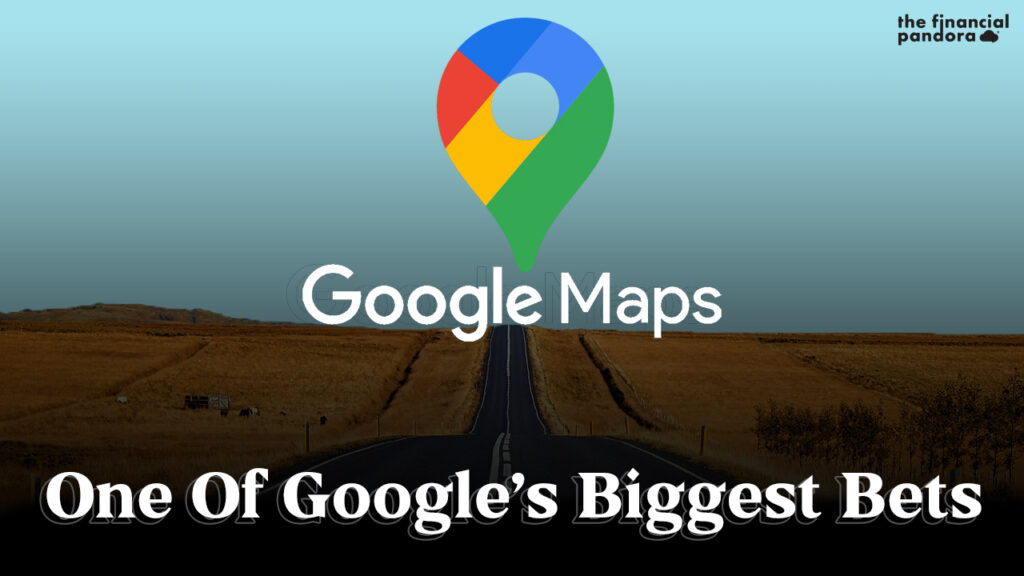Ten years ago, even the thought of driving in a new city would scare people and if you did decide to drive in a new city, it would involve printing out step-by-step instructions and then enduring amateur navigation from your partner in the passenger seat or even worse going in a wrong direction thanks to the person you asked directions for.
Fast forward to now, thanks to the exponential rise of the age of internet and smartphones travelling to a new city or even a country in a car by yourself does not seem daunting at all. The one name that comes into mind all over the world when you mention travelling is Google Maps. This application is just a few which is on every smartphone in the world be it android or an apple.
Google Maps has had a monopoly in this sector, thanks to the layers of data surrounding the application thanks to Google, which makes it impossible for any competitor to match it. An interactive article in verge shows the level of detail available in Google Maps compared to the competitors.
Enjoying such a monopoly and with more than a billion users, you would not expect it to be a fledging business but it is, relatively speaking, in terms of raking it money that is expected from such a business. Now with the Government charting a new liberalized mapping policy in India, the landscape for Google Maps in India is expected to change. So how will Google Maps be able to monetize globally and in this new era of mapping in India, we try to decode that below-
Advertising
Revenue from advertising has been the main source of income for Google for over the years. In 2019, 70% of its total revenue was from advertising. Naturally, Google Maps should also be raking up huge numbers from advertising, but that has not been the case as Google has been careful in putting out advertisements in this space.
“We’ve been pretty careful about not being very aggressive about how we present those [ads] to users because we don’t want users to feel like we’re overloading the experience”- Rajas Moonka, director of product management for Google Maps as reported by Bloomberg.
But according to an analyst note by Morgan Stanley, Google plans to increase advertising revenues from maps exponentially. They plan to majorly do it by following these three models-
1. Local Search Ads
This type of model work on the same principles as the general Google Ads that are present in the search engine. While, Google Maps have had this feature since the onset, they plan to promote this extensively in the upcoming quarters. Similar to the search engine, the paid listing will show at the top, distinctly tagged as “Ad.” The paid listing will also have a different colour (purple) of the pin directly on the map.
For advertisers, if they plan to advertise in Google Maps search, the business will have a “Google My Business Profile” and enable “location extensions” in Google Ads. Advertisers will pay only if their ad gets clicked on, similar to standard Google Ads.
2. Custom Branded Map Pins
This feature has been a relatively new addition to the family of Google Maps. For every successful business, a business logo is very crucial. Companies spend considerable efforts to make a logo which not just promotes the company but also stays in the minds of consumers. Maps is trying to leverage this same thing by offering firms custom branded pins that will feature a business logo. These pins show up right on the map, even if the person is not looking out for specifically that business. In the United States, companies like Walgreen and Walmart have started to aggressively use this advertising way to attract more customers.
For advertisers, not everyone will be able to use this feature as Google has put out specific regulations regarding the number of locations and the average footfall the business has.
3. Using Retail Locations as a Landmark in Navigation
This feature has been touted as an added perk for the bigger Google Ad buyers like McDonald’s, Nike and other big conglomerates. In the feature, when you switch on the voice assistant for the direction’s maps will tend to use local business locations as navigation points. For example, “Turn right after McDonald’s”. Google however has denied that this feature is an advertising tool, they say that this provides a better landmark, and it results in better user experience.
For advertisers, similar to custom branded maps this feature is a luxury afforded by only the top players in the food chain.
With digital marketing spends to increase for the fore sable future, this part of the revenue stream will be a vital component in the road of monetization for Google Maps. Having nearly a billion active users in a month, Google Maps has the base to increase its revenue from advertisement. Even if they try to earn $2 from every user, they will be on course to multiply the revenue that they generate from this stream of services.
API and Partnerships
Google offers its infrastructures of maps to businesses and app developers. Google offers three different products in this stream of business-
i. Custom Maps: these are customizable maps and street view imagery which can be embedded in the application or website to enhance the user experience by helping them get the context they need. Such Maps are used by hotel marketplaces or aggregators like MakeMyTrip and Trivago, real estate website like Housing.com and other applications.
ii. Routes: this is a comprehensive, up-to-date transit, biking, driving, and walking directions covering 40 million miles of roads in over 200 countries and territories. It’s used by companies like mobility apps like Uber, Ola and delivery companies like Zomato, Swiggy and Flipkart who often need to be on the road, deliver the products, or show routes and their current location to the users.
iii. Places: is used to help the users discover points of interest on-demand. It is apt for applications and websites dealing in events, trip booking, trip planning, etc. This product can also help in geo-tagging.
Naturally, the mobility apps are the main source of income in this division of revenue as the API from Google is at the crux of the business. According to the IPO prospectus of Uber, Uber paid roughly $60 million dollars between 2016-2018 to Google for maps, this sum is quite encouraging for the people at Google. With Google Maps partnering with these other similar platforms-
- Lyft (U.S.A)
- OlaCabs (India)
- Hailo (E.U)
- Mytaxi (E.U)
This sector can bring in huge amounts of sums for Google Maps in the near future. Google will try to incorporate its API in other different applications to expand the spread of Maps.
Google Maps in India
Recently, the Government of India introduced radical changes in the mapping domain. The Government has decided to liberalize regulations on geospatial data and maps in an effort to make geospatial data and modern mapping technologies available to Indian companies so that they are not dependent on foreign resources. This announcement means start-ups in this space will not have to depend on Google Maps for data, they can tie-up with ISRO or any other agency without prior approval. This announcement goes in tandem with the current Government’s ambition of an Aatma Nirbhar Bharat as they plan to move away from foreign dependency in mapping.
Another key feature of the new policy is that now Google Maps will have to engage with an Indian partner or a local subsidiary if they wish to enter certain businesses like street view maps. This brings about an added block to the aspirations of Google to increase revenue from Maps.
Potential Competition
They are more than 150 start-ups that are engaged in geographic data processing and mapping. The biggest start-ups being Near and MapMyIndia who is working on making a “fully indigenous mapping portal” with ISRO. With these new policies, we can expect more start-ups to join this space targeting sectors like agriculture, healthcare, finance & revenue, logistics, transportation, technology, commerce & many more.
While Google Maps alone is far bigger than all the start-ups combined, this was possible because of the ambiguous laws that were in India. The onset of these new liberalized policies will make it a level playing field and with the Government continuously pushing for Aatma Nirbhar Bharat, Google Maps is going to face tough competition both from the Government and its peers.
The Road Ahead
Google Maps has a very interesting road ahead in India and also outside India. Maps can be attributed as the one of the biggest untapped revenue sources for Google/Alphabet. The total revenue of Alphabet was $161 billion in the year 2019, while Maps just roped in close to $3 billion dollars according to Morgan Stanley estimates. This huge gap in revenues just further highlights how untapped Google Maps is and Google realises that. They plan to increase revenues from Maps in the coming next five years exponentially.
India will be a major part in this process as it is the biggest market for Maps. While the new policies will bring new firms in this space, the firms will take time to ramp up their capabilities to reach at a point where users would take their services and leave Google Maps. This same time will be crucial in the growth of Google Maps in India, they will have to manage to find workarounds to the curbs presented by the Government.
Google Maps has the potential to triple or even quadruple the revenue they generate in the next two- three years. It is the implementation and favourable policies that will lead to this growth. With the Government, playing the first card it will be very interesting to see what direction Google Maps takes in India and if it can achieve the growth they hope to achieve in the coming years.
Let us know in the comments what do you feel the future holds for Google Maps and if the new policies will hamper this growth.
Follow Us @




